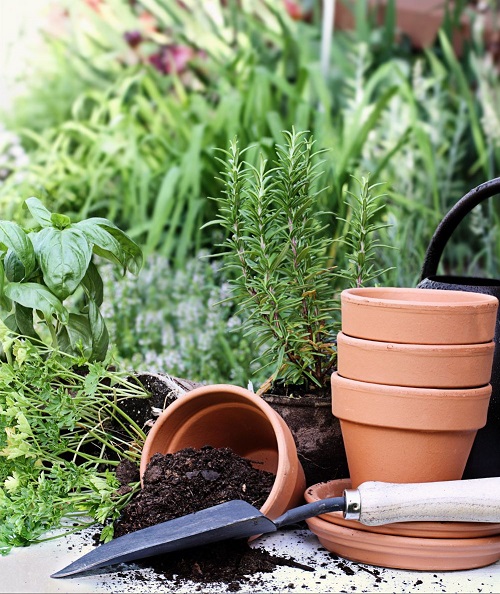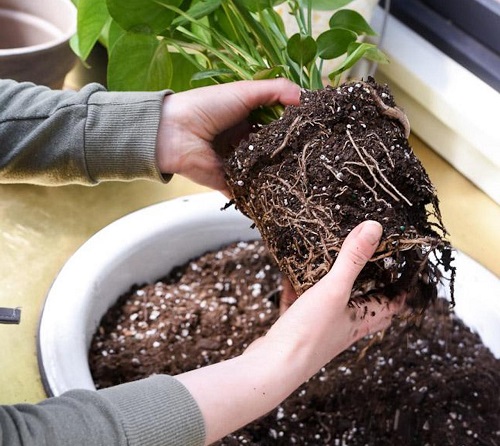Do you want to give a used growing medium a new lease of life? Learn How to Recharge your Old Potting Soil in easy steps!
Overtime, an old growing medium can lose its potency and this can lead to plants not getting enough nutirnets. So, what could be done? Easy! Just give it a new lease of life! Here’s How to Recharge your Old Potting Soil!
Why Recharge Your Growing Medium
1. Nutrient Depletion
As plants absorb nutrients from the soil, the nutrient content decreases. This can lead to nutrient deficiencies in your plants, shown by signs like slow growth, yellowing leaves, and reduced fruit or flower production.
2. Soil Structure Degradation
Over time, watering, root growth, and the natural decomposition of organic matter can cause the soil structure to become compacted and less able to retain water and air. This can affect plant growth negatively.
3. Cost and Sustainability
Recharging your growing medium can be more cost-effective and environmentally friendly than continuously buying new potting soil.
Here are the best recipes to make the perfect growing medium for your plants
When to Recharge your Old Potting Soil
Determining when to recharge your growing medium or potting soil involves observing several signs in your plants and the soil itself. Here’s what to look for:
- Poor Plant Performance: If your plants are showing signs of nutrient deficiency such as yellowing leaves, stunted growth, fewer flowers, or lower yields, it might be time to replenish the soil. However, remember that these symptoms can also be due to other issues like pests or diseases, so rule these out first.
- Watering Issues: If water flows out of the pot quickly after watering, almost as if it’s running down the sides and not soaking into the soil, this can be a sign that the soil structure has degraded and it’s time to amend it. On the other hand, if water sits on top of the soil and doesn’t absorb well, or if the pot stays waterlogged for a long time after watering, it can also indicate that the soil structure needs improvement.
- Soil Appearance and Texture: Healthy soil should be loose and crumbly, not hard or compacted. If the soil in your pots is forming a hard crust on top, or if it looks pale and washed out, it may need rejuvenation.
- Time Since Last Recharge: Even if your plants seem to be doing fine, if it’s been a year or more since you last replenished the soil, it might be time to do so again. Most potting soils are designed to provide nutrients for 6-12 months, after which the nutrients will be significantly depleted.
- After Several Planting Cycles: If you have used the same soil for several consecutive plantings, it’s likely that the soil needs to be recharged.
It’s also helpful to occasionally refresh some of the potting soil itself, particularly if it has become compacted or if it’s been used for several years. Always remember to adjust watering and feeding to each specific plant’s needs, as this can also greatly affect their health and growth.
Learn some Expert Tips to Rejuvenate Old Soil here
How to Recharge Your Growing Medium
Step 1: Remove Old Soil
Remove the old soil from the pot and place it in a large container or wheelbarrow. If the soil is diseased or infested with pests, it’s better to discard it and start with new soil.
Step 2: Clean the Pot
Clean the pot to remove any remaining soil or debris. This helps to prevent the spread of disease or pests. If you’re using a plastic pot, you can scrub it with a mild bleach solution and rinse it well. Clay pots can be cleaned by soaking them in a tub of water for a few hours overnight.
Step 3: Evaluate the Soil
Take a look at the old soil. If it’s compacted, add some perlite, vermiculite, or coarse sand to improve drainage and aeration. If it’s too sandy and doesn’t hold water well, add some coconut coir or peat moss to improve water retention.
Here are 9 Signs that Show Your Soil is Bad & You Should Discard It
Step 4: Add Compost or Manure
Add some well-rotted compost or manure to the soil. You can also go for worm castings or leaf mold. These materials add nutrients and organic matter to the soil, which can help to support healthy plant growth. Aim for about a 1:1 ratio of old soil to compost or manure.
Step 5: Mix in a Balanced Fertilizer
Mix in a slow-release granular fertilizer that contains a balance of the three main plant nutrients: nitrogen, phosphorus, and potassium. Follow the package instructions for the correct amount to use.
Step 6: Test the pH
Test the pH of the soil to ensure it’s in the appropriate range for the plants you’ll be growing. Most plants prefer slightly acidic to neutral pH (6-7), but some plants have different preferences. If necessary, you can adjust the pH by adding lime (to raise pH) or sulfur (to lower pH).
Learn about Changing Soil pH here
Step 7: Re-pot Your Plants
Once the soil has been refreshed, you can repot your plants. Make sure to water them thoroughly after repotting to help settle the soil and reduce stress on the plant.
Remember, recharging your soil is not a one-size-fits-all process. The specific steps and materials you use may vary depending on the condition of your old soil and the needs of your plants.
Look out for these Top 8 Mistakes to Avoid When Repotting Houseplants
Other Options to Add to the Potting Soil to Recharge It
- Compost is rich in organic matter and nutrients and can help improve soil structure. Add a good amount of well-rotted compost to your growing medium and mix it in thoroughly.
- Well-rotted manure can also be a great soil conditioner. It improves the soil’s water-holding capacity and provides nutrients. Make sure to compost it before adding it to your soil to avoid burning plants with too much nitrogen.
- Green manure is an excellent way to add organic matter to the soil. Legumes are top pick as green manure because they also add nitrogen to the soil. Clover, peas, beans, and alfalfa, are particularly important because of their ability to fix nitrogen from the atmosphere.
- Worm castings are a rich source of nutrients and beneficial microbes. They can significantly improve the structure and fertility of your soil.
- Biochar is a type of charcoal used as a soil amendment. It can help improve soil fertility, increase water retention, and reduce soil acidity.
- If you have a freshwater fish tank, the water can be a good source of nutrients when you change the tank. However, don’t use saltwater or water from a tank where you’ve been treating sick fish.
- Used coffee grounds can add organic material to the soil, improving drainage, water retention, and aeration. They also slightly acidify the soil, which can be beneficial for certain plants. Use in moderation, as they can compact and become moldy if used excessively.
- Chopped-up banana peels can be a great addition to your soil as a potassium-rich amendment. Make sure to chop them up finely so they break down more easily.
- Crushed eggshells can provide a slow-release source of calcium, which can help prevent blossom end rot in tomatoes and other susceptible plants.
Note: Before adding any amendments, it’s helpful to do a soil test to find out what nutrients your soil may be lacking. Remember to mix your additives thoroughly with the old soil and give it some time to incorporate and stabilize before planting.





